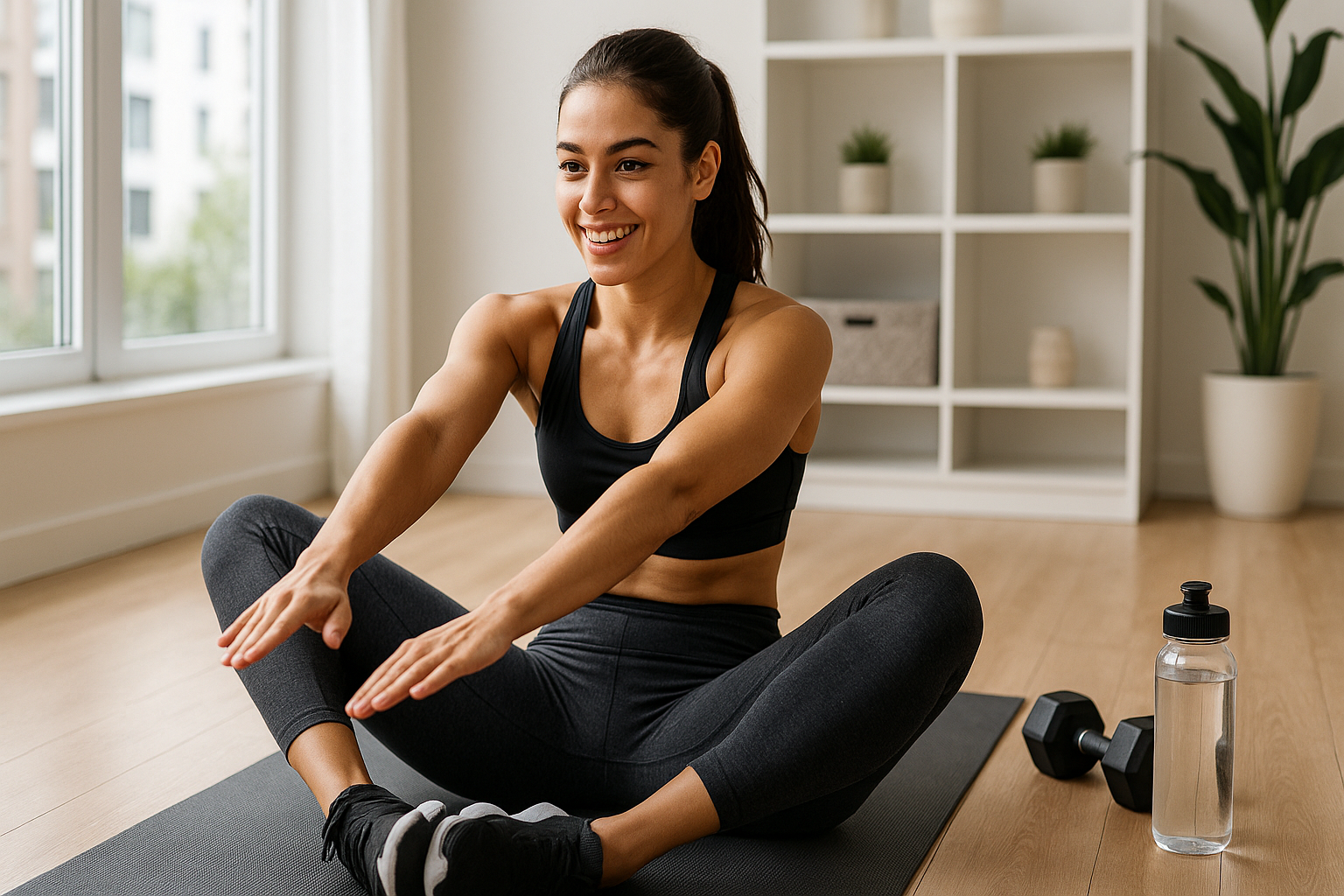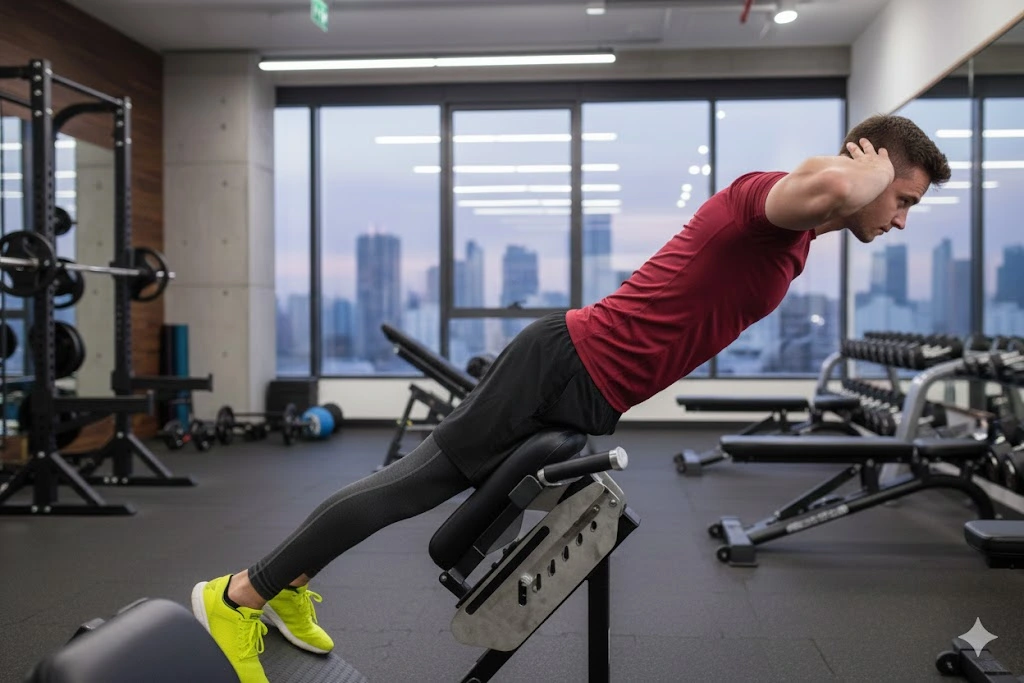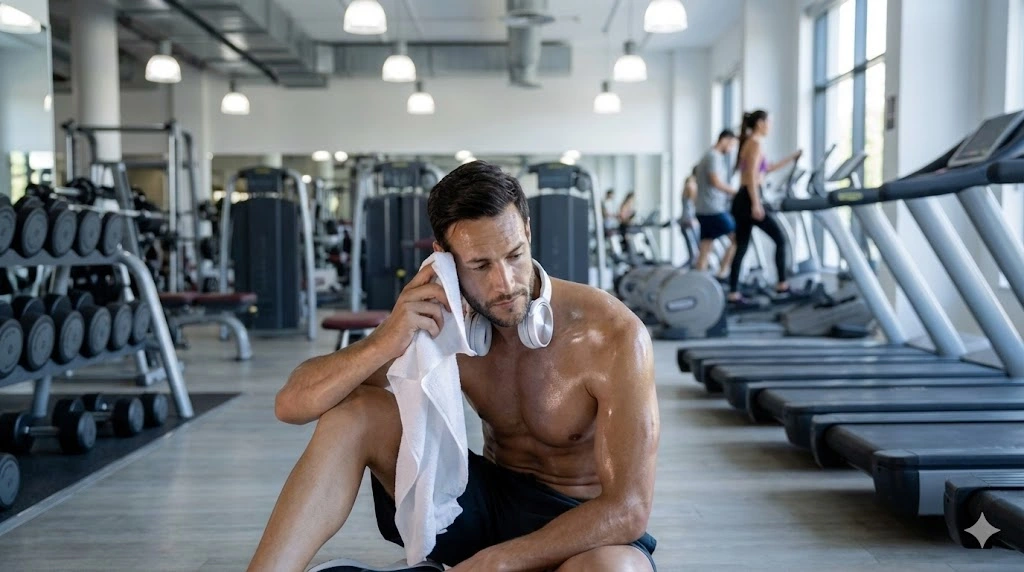Introduction
If you’ve ever tried to strengthen your core, you already know how important abs workouts are. But let’s be honest, doing endless traditional sit-ups can start to feel repetitive or even strain your lower back after a while. That’s where butterfly sit-ups come in. They offer a refreshing twist on the classic sit-up by slightly changing your leg position, making the move both more comfortable and more effective for your core.
The beauty of Butterfly Sit Ups lies in their simplicity. When you bring the soles of your feet together and let your knees fall open, your legs form a shape that resembles butterfly wings. This small adjustment reduces tension in your lower back, engages your inner thighs, and helps you sit up more smoothly. You’ll feel the burn in your abs, but without the stiffness or strain that sometimes comes with regular sit-ups. That’s what makes Butterfly Sit Ups such an effective and comfortable core exercise for beginners and pros alike.
Another major advantage of butterfly sit-ups is that they improve flexibility in your hips and lower body while strengthening your core. That makes them perfectworkout or beginners who are just starting out, or for anyone looking to add variety to their ab routine. Plus, since they don’t require any equipment, you can do them anywhere, at home, in the gym, or even while traveling.
In this article, I’ll walk you through exactly what butterfly sit-ups are, how to perform them with proper form, and why they deserve a spot in your regular workouts. By the end, you’ll see how this simple exercise can help you build a stronger, more stable core without discomfort or boredom.
Table of Contents
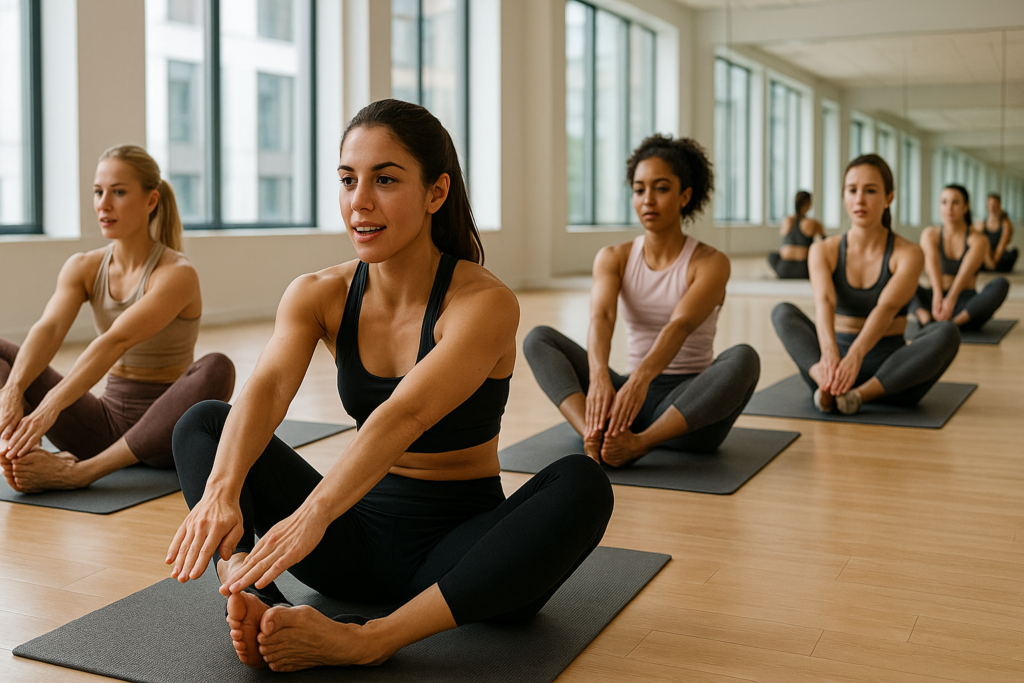
What Are Butterfly Sit-Ups?
Ever tried doing a regular sit-up and thought, “This just doesn’t feel right”? That’s exactly where Butterfly Sit Ups make a difference. They’re a simple twist, literally, on the traditional move. Instead of planting your feet flat on the floor, you bring the bottoms of your feet together and let your knees fall open wide, creating the shape of butterfly wings. That’s how the Butterfly Sit Up got its name.
It might look more like a stretch than an ab exercise, but don’t be fooled, it’s a powerful core movement. This position naturally relieves pressure from your lower back, making it more joint-friendly while increasing activation in your abdominal muscles, hip flexors, and inner thighs. You’ll feel a deeper, more balanced contraction through your core without that uncomfortable strain you sometimes get from classic sit-ups.
Many people find that Butterfly Sit Ups feel more natural and fluid. There’s no stiffness, no pulling on the neck or spine, and you still get that satisfying ab burn that comes from a controlled movement. Best of all, you don’t need any special equipment, just a floor mat and a bit of space. It’s one of those simple, effective exercises that, once you try it, you wonder why it wasn’t part of your workout all along.
How to Do Butterfly Sit-Ups Correctly
Alright, let’s break it down. Doing butterfly sit ups isn’t complicated, but form matters if you want to get the most out of them (and avoid any strain). Here’s how to do them step by step:

1. Start on your back
Start by lying flat on your back on a comfortable surface, a yoga mat, carpet, or any soft flooring that allows you to relax completely. Take a moment to settle your body and release any tension in your shoulders and neck. Once you’re comfortable, bring the soles of your feet together so they gently touch, then let your knees fall open to the sides naturally.
This position creates the foundation for Butterfly Sit Ups and forms a shape that looks just like butterfly wings. It opens up your hips, stretches your inner thighs, and encourages your lower body to relax while keeping your core slightly engaged. You’ll feel a gentle stretch in your groin and hips, not strain, just enough to loosen up tight areas.
Keep your arms relaxed by your sides or lightly resting on your stomach. Take a few deep breaths here before starting the movement. This simple setup not only reduce stress in your lower back but also helps you move more freely and comfortably when performing your Butterfly Sit Ups.
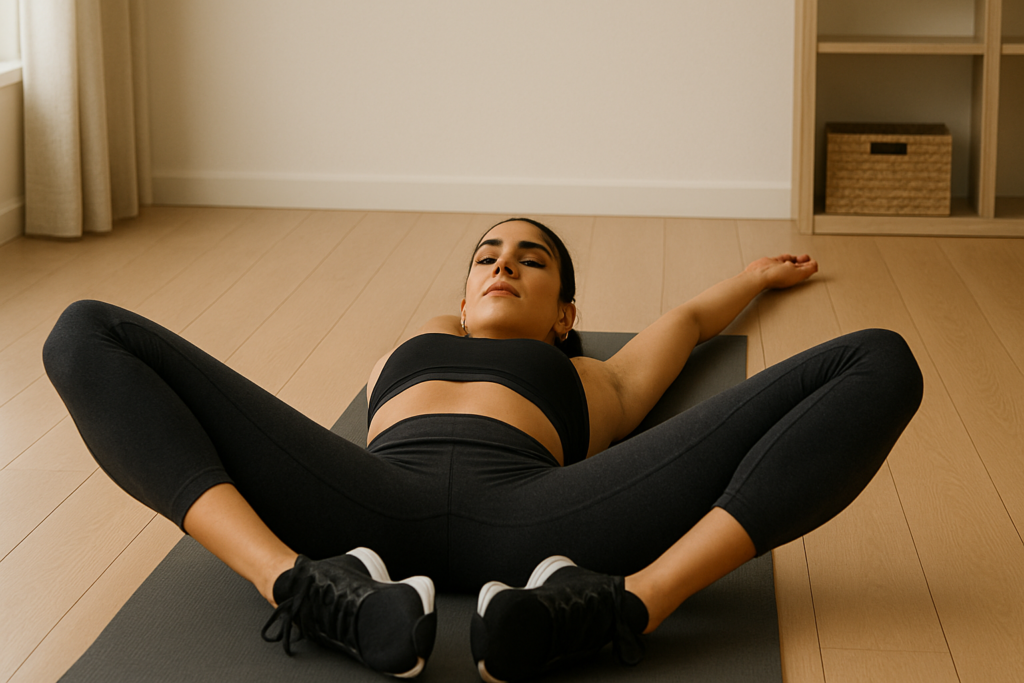
2. Arms go overhead
Once you’re comfortable with your legs in the butterfly position, slowly reach your arms overhead and stretch them out behind you, letting them rest gently on the floor. Your palms can face up if you want to open your chest more or face down if that feels more grounded. Choose whichever position feels most natural and relaxed. As you extend your arms, take a deep breath and allow your ribcage to expand. This subtle stretch opens your chest and shoulders, releasing any tension that tends to build up from sitting or hunching forward during the day.
Holding this position for a few moments helps your entire upper body loosen up. You’ll feel a gentle lengthening through your torso, arms, and even your spine. It’s a simple but effective setup that prepares your body for Butterfly Sit Ups, helping you stay centered, relaxed, and fully in tune with your movement before you begin the actual sit-up motion.
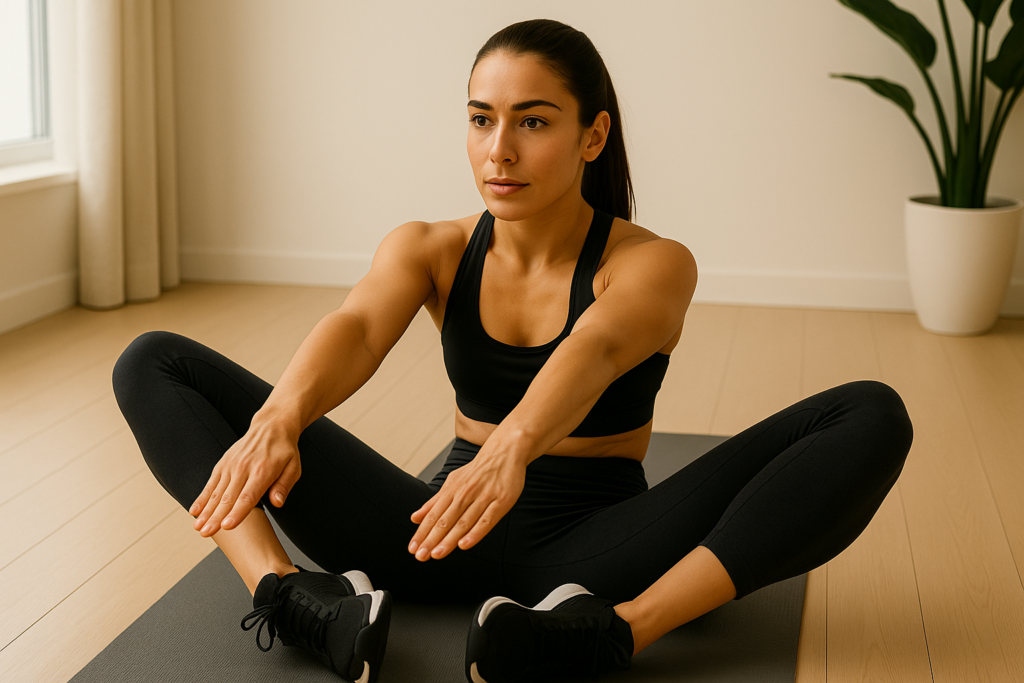
3. The sit-up part
Now it’s time to engage your core and perform the main movement of the Butterfly Sit Up. From your lying position, take a deep breath and slowly begin to lift your upper body off the floor. Focus on tightening your abdominal muscles, these are the ones doing the real work. Avoid pulling yourself up with your neck, shoulders, or arms; instead, think about rolling your spine off the mat one vertebra at a time. This helps protect your neck and ensures your abs are fully activated throughout the movement.
As you rise, reach your hands forward toward your feet. If that feels too intense, simply tap the floor in front of you or extend your arms at a comfortable distance. The key is to move with control, not momentum. You should feel your abs contract as you lift, and your back stretch slightly as you reach the top position.
This movement strengthens your core while improving flexibility in your spine and hips. It also promotes better posture by training your body to move with balance and precision. Remember to move slowly, breathe steadily, and let your core guide every part of the Butterfly Sit Up, quality is far more important than speed.
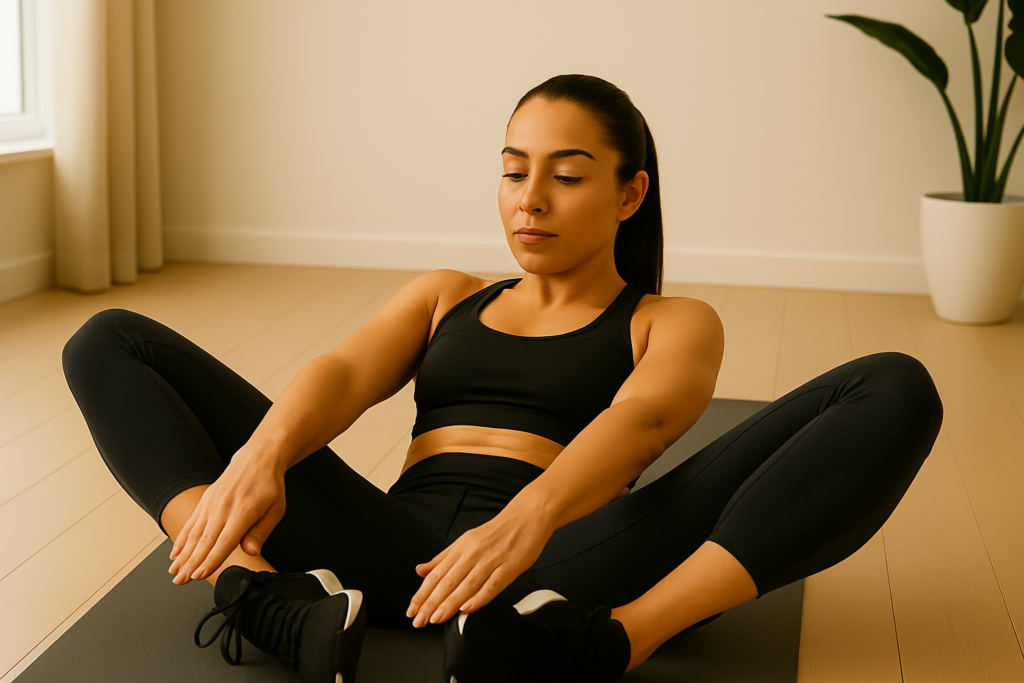
4. Lower back down
After you’ve reached forward or tapped the floor with your hands, it’s time to come back down. Slowly and with control, lower your upper body back down to the mat or floor. Don’t just flop down—try to keep the movement smooth and deliberate, using your core muscles to guide you back. This controlled lowering helps strengthen your abdominal muscles even more and protects your back from unnecessary strain. Once you’re fully back down, you’ve completed one full repetition of the exercise.
Now, a few tips: keep your feet touching throughout the movement, and don’t rush through it. Controlled movement is what makes this effective. Also, avoid using momentum by swinging your arms too much. A little fine, especially for beginners, but the goal is that you allow your abs to lift heavy.
If you are currently starting with core training, butterfly sit-ups are actually more forgiving than regular sit-ups. The open-leg conditions help reduce your hip flexors and lower back tension, making this step more accessible to many people.
Want to make it difficult? Try an butterfly sit up exercise holding a light weight on your chest or overhead. Just a small change can seriously change the challenge.
Benefits of Butterfly Sit-Ups
So why should you bother adding butterfly sit-ups to your routine? Simple: they hit your core in a smart, joint-friendly way, and they come with some underrated perks.
First off, they’re easier on your lower back. Because your knees are out to the sides, your hips stay more open, which means less tension pulling on your spine. If regular sit-ups feel like they crunch more than just your abs, butterfly sit ups might be the upgrade you didn’t know you needed.
Second, this movement gives your inner thighs and hip flexors a little bonus action. You’re not just working your abs you’re also improving flexibility and engaging muscles that sit-ups usually ignore. That makes the butterfly sit ups exercise more well-rounded than you might expect.
Another plus? They are only bodyweight, so you do not need gym or any equipment. Whether you’re working at home, traveling, or just squeezing in a quick core session, you can leave down and almost any representative out anywhere.
And let’s not forget: variety matters. Doing the same ab exercises over and over gets boring and less effective. Mixing in butterfly sit up variations can keep your workouts fresh and your body guessing, which is great for progress.
Modifications and Variations
One of the best things about the butterfly sit ups exercise is how easy it is to tweak. Whether you’re a beginner or looking to push yourself, there’s a version that fits just right.
For Beginners:
Just getting started? No problem. You can shorten the range of motion maybe don’t come all the way up at first. Keep your hands across your chest instead of overhead to make it easier. You can also use a slight arm swing to give yourself a little boost on the way up. Over time, as your core gets stronger, you’ll naturally progress to the full butterfly sit up.
Want to Make It Harder?
Once you’ve nailed the basics, it’s super easy to turn things up. Try holding a dumbbell, a weight plate, or even a water bottle at your chest while doing butterfly sit-ups. You’ll feel the difference right away your core will fire up fast.
Another fun twist? Add a torso rotation at the top. So instead of just sitting up, you twist to one side, then alternate. This targets your obliques and gives you more bang for your buck.
If You Need Extra Support:
If lying flat on the floor doesn’t feel great on your back, place a folded towel or cushion under your lower spine. You still get the benefits of the move, just with a little more comfort.
Basically, the butterfly sit ups exercise is flexible enough to meet you where you’re at whether you want to keep it simple or level up.
How to Add Butterfly Sit-Ups to Your Workout Routine
Fitting butterfly sit ups into your routine is super simple. You can use them as a warm-up, throw them into a core circuit, or even end your workout with a quick ab finisher.
If you’re just starting out, go for 2–3 sets of 12–15 reps. As you get stronger, increase the reps or add a weight for extra challenge. The butterfly sit ups exercise also works great in home workouts no gear needed, just a mat and some space.
Doing full-body training? Toss in a set of butterfly sit ups between squats or push-ups to keep your core engaged the whole time.
Easy to add, easy to love and your abs will feel it.
Final Tips and Safety Advice
A few quick things to keep in mind when doing butterfly sit ups:
- Don’t rush. Controlled movements activate your core better than fast, sloppy reps.
- Keep your feet together and knees relaxed no need to force anything.
- If your lower back feels strained, try placing a small cushion or folded towel under it.
- Breathe! Exhale as you sit up, inhale as you go back down.
And remember, the goal of the butterfly sit-ups exercise is quality, not quantity. It’s better to do 10 solid reps than 20 rushed ones with bad form.
FAQs About Butterfly Sit-Ups
Q1. How do you properly do butterfly sit-ups?
Lie together on your back with the soles of your feet and place the sides on the knees. Use your core to sit slowly, reach your feet, then back down with control. Keep touching your feet and avoid using speed.
Q2. Are butterfly sit-ups better than regular sit-ups?
They may be better for some people because the butterfly position reduces stress on your back and opens your hips. This makes them more comfortable and helps to target your ABS and internal thighs more effectively.
Q3. What muscles do butterfly sit-ups work?
Butterfly sit-up mainly works your abdominal muscles, especially rectus abdominis, plus your hip flexors and internal thigh muscles. This makes them a well-rounded core exercise.
Q4. Can butterfly sit-ups help with lower back pain?
Yes, because the foot position opens your hips and reduces pressure on your lower back, butterfly sit-ups can be easier and can be safe for people with lighter lower part discomfort compared to regular sit-ups..
Q5. How many butterfly sit-ups should I do daily for results?
Start 3 to 4 times a week with 2-3 sets of 12–15 reps. As your core gets stronger, you can increase the resistance for a big challenge or add weight.
Conclusion
If you’re looking for a core exercise that’s simple, effective, and more comfortable than traditional crunches, Butterfly Sit Ups are worth adding to your routine. This movement combines strength, flexibility, and control, helping you target your abs while keeping pressure off your lower back. Because your feet are together and your knees are open, your hips and inner thighs also get engaged, giving you a well-rounded core workout that feels both challenging and gentle at the same time.
One of the best parts about Butterfly Sit Ups is how accessible they are. You don’t need a gym, special gear, or any complicated setup, just your body, a floor mat, and a few minutes of focus. Whether you’re a beginner trying to strengthen your core or someone looking to add variety to an existing routine, this exercise fits right in. It’s a great alternative for anyone who finds regular sit-ups uncomfortable or hard on the back.
So next time you’re planning an ab workout, skip the boring crunches and try Butterfly Sit Ups instead. Your core will feel stronger, your hips more flexible, and your lower back will thank you for choosing a movement that builds strength with comfort.

